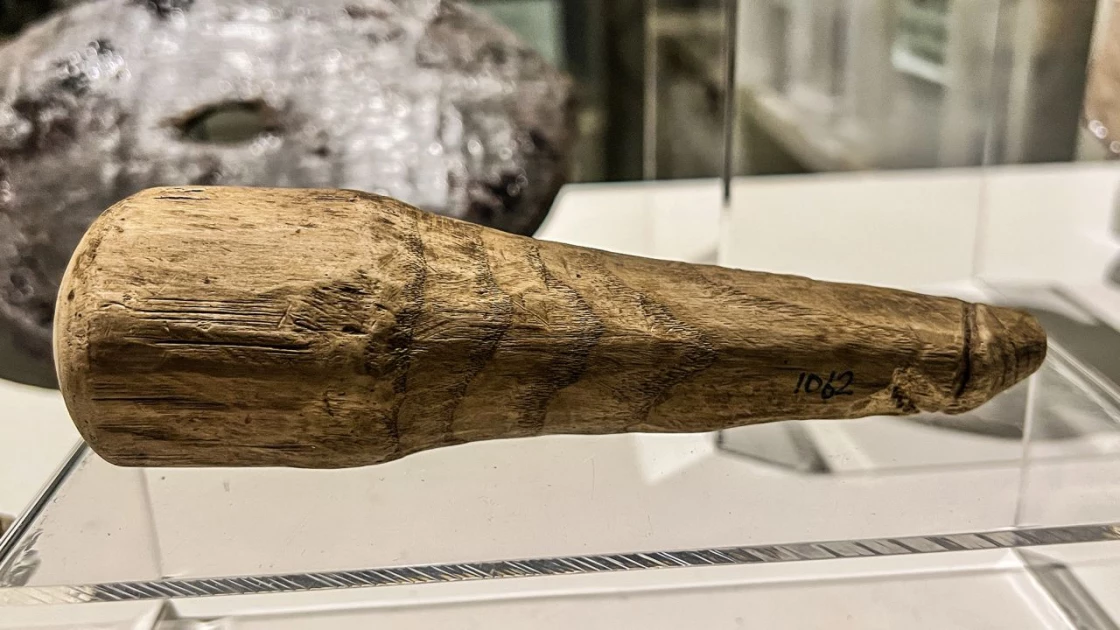A recent study suggests that a nearly 2,000-year-old wooden object discovered near Hadrian’s Wall, at the Roman Fort of Vindolanda in northern England, may have served as a sexual tool among ancient Romans in Britain. The artifact, initially identified as a darning tool when unearthed in 1992, was found in a ditch alongside various items, including shoes, dress accessories, and small tools. Researchers have now reinterpreted the object as a disembodied phallus after closer examination, proposing potential functions based on Roman art and literature.
Measuring 160 millimeters (6.3 inches) in length, the carved object is thought to have been used for sexual purposes, particularly for clitoral stimulation rather than penetration. If confirmed as a sex toy, it would be the only known non-miniaturized wooden phallus from Roman times. Study coauthor Rob Collins, a senior lecturer in archaeology at Newcastle University, highlighted that while Roman art and literature referenced the use of such objects, archaeological finds have been scarce, likely due to the perishable nature of organic materials commonly used for making these items.
Collins emphasized that the object’s purpose might not have been limited to pleasure; it could have been used for torture or to assert dominance by a slave owner over an enslaved person, regardless of gender. The study cautioned against dismissing the object as solely frivolous, suggesting it could have played a role in perpetuating power imbalances and subjugation.
Although small phallus objects were commonly found as pendants for protective purposes, this particular artifact, carved from young ash roundwood with wear at both ends, differed in its potential functions. While it could have been inserted into a structure for good luck, the study explored alternative uses such as being a pestle for grinding or mixing materials in cooking, cosmetics, ointments, or medicines. The phallus-shaped pestle may have symbolically added protection or potency to the prepared substances.
Collins proposed that the object might have served multiple purposes, with its function possibly evolving over time. Comparisons with similar objects in archaeological finds could assist in identifying its function more accurately. The study encourages a reexamination of museum collections to identify potentially similar artifacts that may not have been recognized as such. Despite being currently unique in its survival, the wooden phallus is believed to be one of several used at the site, along the Roman frontier, and in Roman Britain.



